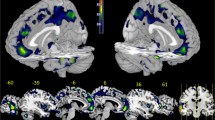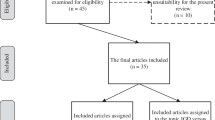Abstract
Methamphetamine (meth) is potently addictive and is closely linked to high crime rates in the world. Since meth withdrawal is very painful and difficult, most abusers relapse to abuse in traditional treatments. Therefore, developing accurate data-driven methods based on brain functional connectivity could be helpful in classifying and characterizing the neural features of meth dependence to optimize the treatments. Accordingly, in this study, computation of functional connectivity using resting-state EEG was used to classify meth dependence. Firstly, brain functional connectivity networks (FCNs) of 36 meth dependent individuals and 24 normal controls were constructed by weighted phase lag index, in six frequency bands: delta (1–4 Hz), theta (4–8 Hz), alpha (8–15 Hz), beta (15–30 Hz), gamma (30–45 Hz) and wideband (1–45 Hz).Then, significant differences in graph metrics and connectivity values of the FCNs were used to distinguish the two groups. Support vector machine classifier had the best performance with 93% accuracy, 100% sensitivity, 83% specificity and 0.94 F-score for differentiating between MDIs and NCs. The best performance yielded when selected features were the combination of connectivity values and graph metrics in the beta frequency band.




Similar content being viewed by others
References
Ahmadlou M, Ahmadi K, Rezazade M, Azad-Marzabadi E (2013) Global organization of functional brain connectivity in methamphetamine abusers. Clin Neurophysiol 124(6):1122–1131
Alvar AA, Deevband MR, Ashtiyani M (2017) Neutron spectrum unfolding using radial basis function neural networks. Appl Radiat Isot 129:35–41
Bae Y, Yoo BW, Lee JC, Kim HC (2017) Automated network analysis to measure brain effective connectivity estimated from EEG data of patients with alcoholism. Physiol Meas 38(5):759
Bauer LO (2001) Predicting relapse to alcohol and drug abuse via quantitative electroencephalography. Neuropsychopharmacology 25(3):332–340
Bullmore E, Sporns O (2009) Complex brain networks: graph theoretical analysis of structural and functional systems. Nat Rev Neurosci 10(3):186
Burges CJ (1998) A tutorial on support vector machines for pattern recognition. Data Min Knowl Discov 2(2):121–167
Choi JS, Park SM, Lee J, Hwang JY, Jung HY, Choi SW, Kim DJ, Oh S, Lee JY (2013) Resting-state beta and gamma activity in Internet addiction. Int J Psychophysiol 89(3):328–333
Delorme A, Makeig S (2004) EEGLAB: an open source toolbox for analysis of single-trial EEG dynamics including independent component analysis. J Neurosci Methods 134(1):9–21
Dunning JP, Parvaz MA, Hajcak G, Maloney T, Alia-Klein N, Woicik PA, Telang F, Wang GJ, Volkow ND, Goldstein RZ (2011) Motivated attention to cocaine and emotional cues in abstinent and current cocaine users—an ERP study. Eur J Neurosci 33(9):1716–1723
Ewald A, Aristei S, Nolte G, Rahman RA (2012) Brain oscillations and functional connectivity during overt language production. Front Psychol 3:166
Fein G, Allen J (2005) EEG spectral changes in treatment-naive, actively drinking alcoholics. Alcohol Clin Exp Res 29(4):538–546
Fingelkurts AA, Fingelkurts AA, Kivisaari R, Autti T, Borisov S, Puuskari V, Jokela O, Kahkonen S (2006) Increased local and decreased remote functional connectivity at EEG alpha and beta frequency bands in opioid-dependent patients. Psychopharmacology 188(1):42–52
Franken IH, Stam CJ, Hendriks VM, van den Brink W (2004) Electroencephalographic power and coherence analyses suggest altered brain function in abstinent male heroin-dependent patients. Neuropsychobiology 49(2):105–110
González GF, Van der Molen M, Žarić G, Bonte M, Tijms J, Blomert L, Stam C, Van der Molen M (2016) Graph analysis of EEG resting state functional networks in dyslexic readers. Clin Neurophysiol 127(9):3165–3175
Günther W, Müller N, Knesewitsch P, Haag C, Trapp W, Banquet J-P, Stieg C, Alper KR (1997) Functional EEG mapping and SPECT in detoxified male alcoholics. Eur Arch Psychiatry Clin Neurosci 247(3):128–136
Hardmeier M, Hatz F, Bousleiman H, Schindler C, Stam CJ, Fuhr P (2014) Reproducibility of functional connectivity and graph measures based on the phase lag index (PLI) and weighted phase lag index (wPLI) derived from high resolution EEG. PLoS ONE 9(10):e108648
Haufe S, Nikulin VV, Müller K-R, Nolte G (2013) A critical assessment of connectivity measures for EEG data: a simulation study. Neuroimage 64:120–133
Herning RI, Better W, Cadet JL (2008) EEG of chronic marijuana users during abstinence: relationship to years of marijuana use, cerebral blood flow and thyroid function. Clin Neurophysiol 119(2):321–331
Herrera-Diaz A, Mendoza-Quinones R, Melie-Garcia L, Martinez-Montes E, Sanabria-Diaz G, Romero-Quintana Y, Salazar-Guerra I, Carballoso-Acosta M, Caballero-Moreno A (2016) Functional connectivity and quantitative EEG in women with alcohol use disorders: a resting-state study. Brain Topogr 29(3):368–381
Hjorth B (1975) An on-line transformation of EEG scalp potentials into orthogonal source derivations. Electroencephalogr Clin Neurophysiol 39(5):526–530
Hu B, Dong Q, Hao Y, Zhao Q, Shen J, Zheng F (2017) Effective brain network analysis with resting-state EEG data: a comparison between heroin abstinent and non-addicted subjects. J Neural Eng 14(4):046002
Huang Y, Mohan A, De Ridder D, Sunaert S, Vanneste S (2018) The neural correlates of the unified percept of alcohol-related craving: a fMRI and EEG study. Sci Rep 8(1):923
Jena SK (2015) Examination stress and its effect on EEG. Int J Med Sci Public Health 11(4):1493–1497
Jiang G, Wen X, Qiu Y, Zhang R, Wang J, Li M, Ma X, Tian J, Huang R (2013) Disrupted topological organization in whole-brain functional networks of heroin-dependent individuals: a resting-state FMRI study. PLoS ONE 8(12):e82715
Kim YJ, Lee JY, Oh S, Park M, Jung HY, Sohn BK, Choi SW, Kim DJ, Choi JS (2017) Associations between prospective symptom changes and slow-wave activity in patients with Internet gaming disorder: a resting-state EEG study. Medicine 96(8):e6178
Lee JY, Park SM, Kim YJ, Kim DJ, Choi S-W, Kwon JS, Choi J-S (2017) Resting-state EEG activity related to impulsivity in gambling disorder. J Behav Addict 6(3):387–395
Ma N, Liu Y, Li N, Wang C-X, Zhang H, Jiang X-F, Xu H-S, Fu X-M, Hu X, Zhang D-R (2010) Addiction related alteration in resting-state brain connectivity. Neuroimage 49(1):738–744
McKetin R, McLaren J, Lubman DI, Hides L (2006) The prevalence of psychotic symptoms among methamphetamine users. Addiction 101(10):1473–1478
Mohagheghian F, Makkiabadi B, Jalilvand H, Khajehpoor H, Samadzadehaghdam N, Eqlimi E, Deevband M (2018) Computer-aided tinnitus detection based on brain network analysis of EEG functional connectivity. J Biomed Phys Eng
Motlagh F, Ibrahim F, Rashid R, Seghatoleslam T, Habil H (2017) Investigation of brain electrophysiological properties among heroin addicts: quantitative EEG and event-related potentials. J Neurosci Res 95(8):1633–1646
Mumtaz W, Vuong PL, Xia L, Malik AS, Rashid RBA (2017) An EEG-based machine learning method to screen alcohol use disorder. Cogn Neurodyn 11(2):161–171
Mumtaz W, Kamel N, Ali SSA, Malik AS (2018a) An EEG-based functional connectivity measure for automatic detection of alcohol use disorder. Artif Intell Med 84:79–89
Mumtaz W, Vuong PL, Malik AS, Rashid RBA (2018b) A review on EEG-based methods for screening and diagnosing alcohol use disorder. Cogn Neurodyn 12(2):141–156
Newson JJ, Thiagarajan TC (2018) EEG frequency bands in psychiatric disorders: a review of resting state studies. Front Hum Neurosci 12:521
Ojala M, Garriga GC (2010) Permutation tests for studying classifier performance. J Mach Learn Res 11(Jun):1833–1863
Oostenveld R, Fries P, Maris E, Schoffelen J-M (2011) FieldTrip: open source software for advanced analysis of MEG, EEG, and invasive electrophysiological data. Comput Intell Neurosci 2011:1
Park SM, Lee JY, Kim YJ, Lee JY, Jung HY, Sohn BK, Kim DJ, Choi JS (2017) Neural connectivity in Internet gaming disorder and alcohol use disorder: a resting-state EEG coherence study. Sci Rep 7(1):1333
Polunina AG, Davydov DM (2004) EEG spectral power and mean frequencies in early heroin abstinence. Prog Neuropsychopharmacol Biol Psychiatry 28(1):73–82
Rangaswamy M, Porjesz B, Chorlian DB, Wang K, Jones KA, Bauer LO, Rohrbaugh J, O’connor SJ, Kuperman S, Reich T (2002) Beta power in the EEG of alcoholics. Biol Psychiat 52(8):831–842
Rangaswamy M, Porjesz B, Chorlian DB, Choi K, Jones KA, Wang K, Rohrbaugh J, O’Connor S, Kuperman S, Reich T (2003) Theta power in the EEG of alcoholics. Alcohol Clin Exp Res 27(4):607–615
Rubinov M, Sporns O (2010) Complex network measures of brain connectivity: uses and interpretations. Neuroimage 52(3):1059–1069
Saletu-Zyhlarz GM, Arnold O, Anderer P, Oberndorfer S, Walter H, Lesch OM, Böning J, Saletu B (2004) Differences in brain function between relapsing and abstaining alcohol-dependent patients, evaluated by EEG mapping. Alcohol Alcohol 39(3):233–240
Shahmohammadi F, Golesorkhi M, Kashani MMR, Sangi M, Yoonessi A, Yoonessi A (2016) Neural correlates of craving in methamphetamine abuse. Basic Clin Neurosci 7(3):221
Snoek J, Larochelle H, Adams RP (2012) Practical bayesian optimization of machine learning algorithms. Adv Neural Inf Process Syst 5(1):2951–2959
Son KL, Choi JS, Lee J, Park SM, Lim JA, Lee JY, Kim SN, Oh S, Kim DJ, Kwon JS (2015) Neurophysiological features of Internet gaming disorder and alcohol use disorder: a resting-state EEG study. Transl Psychiatry 5:e628
Vapnik V (2013) The nature of statistical learning theory. Springer, Berlin
Vinck M, Oostenveld R, Van Wingerden M, Battaglia F, Pennartz CM (2011) An improved index of phase-synchronization for electrophysiological data in the presence of volume-conduction, noise and sample-size bias. Neuroimage 55(4):1548–1565
Wang GY, Kydd R, Wouldes TA, Jensen M, Russell BR (2015a) Changes in resting EEG following methadone treatment in opiate addicts. Clin Neurophysiol 126(5):943–950
Wang Z, Suh J, Li Z, Li Y, Franklin T, O’Brien C, Childress AR (2015b) A hyper-connected but less efficient small-world network in the substance-dependent brain. Drug Alcohol Depend 152:102–108
Watts DJ, Strogatz SH (1998) Collective dynamics of ‘small-world’networks. Nature 393(6684):440
Wetherill RR, Rao H, Hager N, Wang J, Franklin TR, Fan Y (2018) Classifying and characterizing nicotine use disorder with high accuracy using machine learning and resting-state fMRI. Addict Biol 24(4):811–821
Zhao Q, Jiang H, Hu B, Li Y, Zhong N, Li M, Lin W, Liu Q (2017) Nonlinear dynamic complexity and sources of resting-state eeg in abstinent heroin addicts. IEEE Trans Nanobiosci 16(5):349–355
Zilverstand A, Huang AS, Alia-Klein N, Goldstein RZ (2018) Neuroimaging impaired response inhibition and salience attribution in human drug addiction: a systematic review. Neuron 98(5):886–903
Zweig MH, Campbell G (1993) Receiver-operating characteristic (ROC) plots: a fundamental evaluation tool in clinical medicine. Clin Chem 39(4):561–577
Acknowledgements
The authors wish to thank TUMS and CSTC for financial support of this research and also National Brain Mapping Laboratory (NBML) for their instrumental support.
Funding
This work was supported in part by Tehran University of Medical Sciences (TUMS) (https://www.tums.ac.ir/?lang=en), project Grant No. of 95-02-30-32441, and also by Cognitive Sciences and Technologies Council (CSTC) (http://cogc.ir/?lang=2) Grant No. of 4517. The funders has played no role in the research. The funders had no role in study design, data collection and analysis, decision to publish, or preparation of the manuscript.
Author information
Authors and Affiliations
Corresponding author
Ethics declarations
Conflict of interest
The authors declare that they have no conflict of interest.
Ethical approval
The experimental was reviewed and approved by the ethics committee of Tehran University of Medical Sciences (Iran) (Ethical Committee Approval Code: IR.TUMS.MEDICINE.REC.1395.1621).
Additional information
Publisher's Note
Springer Nature remains neutral with regard to jurisdictional claims in published maps and institutional affiliations.
Rights and permissions
About this article
Cite this article
Khajehpour, H., Mohagheghian, F., Ekhtiari, H. et al. Computer-aided classifying and characterizing of methamphetamine use disorder using resting-state EEG. Cogn Neurodyn 13, 519–530 (2019). https://doi.org/10.1007/s11571-019-09550-z
Received:
Revised:
Accepted:
Published:
Issue Date:
DOI: https://doi.org/10.1007/s11571-019-09550-z




